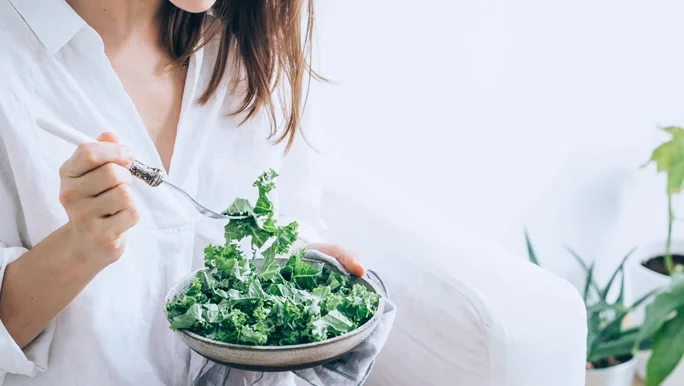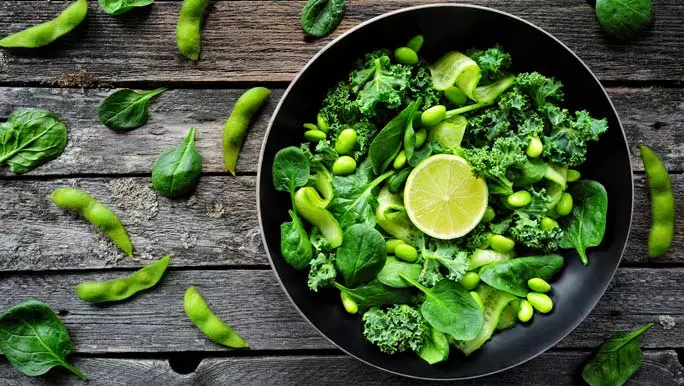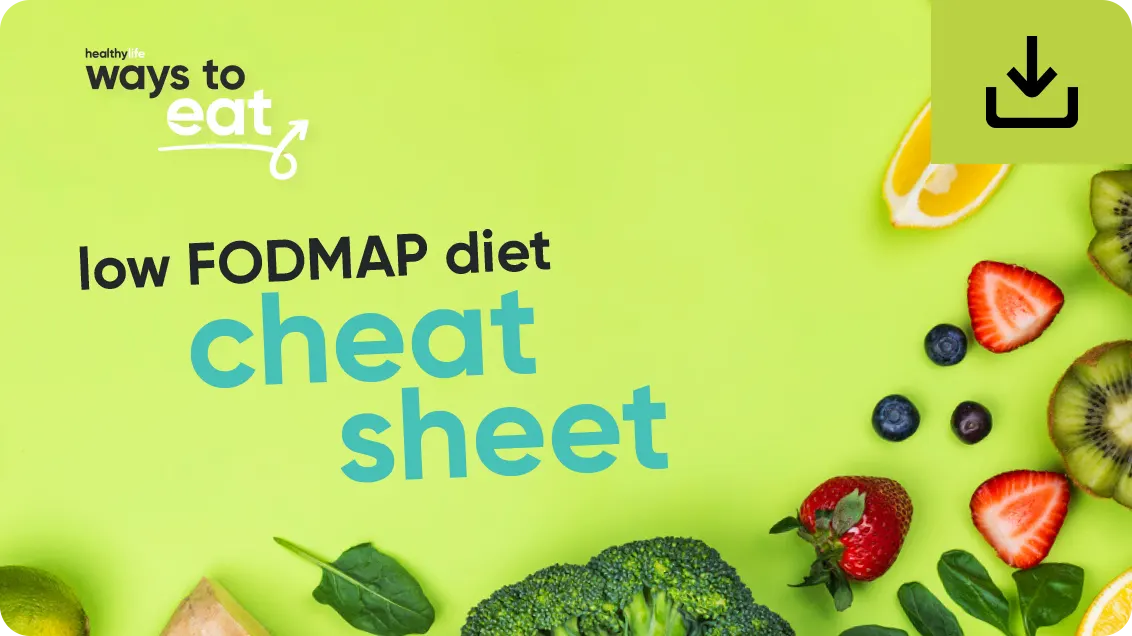Low FODMAP vegetables list

Have you been told time and time again to eat more vegetables? Are you unsure about which veggies are considered low FODMAP?
Eating a variety of different vegetables helps us to meet our nutrient requirements and eating a diverse range of plant foods (including veggies) each week has been shown to be beneficial for our gut health.
So to make it easier for you, our expert FODMAP dietitian, Chloe McLeod has put together her top tips for choosing low FODMAP veggies and we even have a handy list to share.
What are the main FODMAPs in vegetables?
The main FODMAPs found in vegetables are fructans and mannitol.
As part of the process of diagnosing IBS you may have completed some tests and trials to help you become more aware of your tolerance levels of FODMAPs in certain types of foods, including vegetables.
You may find you can eat a great variety of vegetables without experiencing IBS symptoms.
A few vegetables which are high in fructans include: garlic, onion, leek, artichoke and spring onion.
A few vegetables which are high in mannitol include: mushrooms, cauliflower and snow peas.

You can still get your 5 serves of vegetables a day on a low FODMAP diet.
What vegetables are low FODMAP?
The following vegetables are considered low FODMAP per 75g serve.
Aim to include mostly low FODMAP vegetables to meet the recommended 5 serves of vegetables per day.
One serve of vegetables is equivalent to 75g. This could be ½ cup of cooked vegetables, or 1 cup of fresh vegetables.
Low FODMAP vegetable list
- Alfalfa
- Artichoke
- Bamboo shoots
- Bean sprouts
- Beetroot (pickled)
- Bok choy
- Broccoli (heads)
- Broccolini (stalks only)
- Cabbage (common)
- Capsicum (red)
- Carrot
- Cassava
- Chilli (serve = 28g)
- Choy Sum
- Collard Greens
- Canned baby corn
- Cucumber
- Edamame
- Japanese pumpkin
- Kale
- Lettuce (cos, butter, iceberg)
- Rocket
- Oyster mushrooms
- Olives
- Parsnip
- Potato
- Radish
- Rocket
- Silver beet
- Spaghetti squash
- Spinach
- Spring onion greens, tops only (serve = 16g)
- Squash
- Swede
- Taro
- Tomatoes
- Turnip

Have you been recommended a low FODMAP diet? Our FREE dietitian developed program will guide you through the low FODMAP diet and provide you with this low FODMAP cheat sheet for all food groups.
Reviewed by the healthylife Advisory Board November 2021